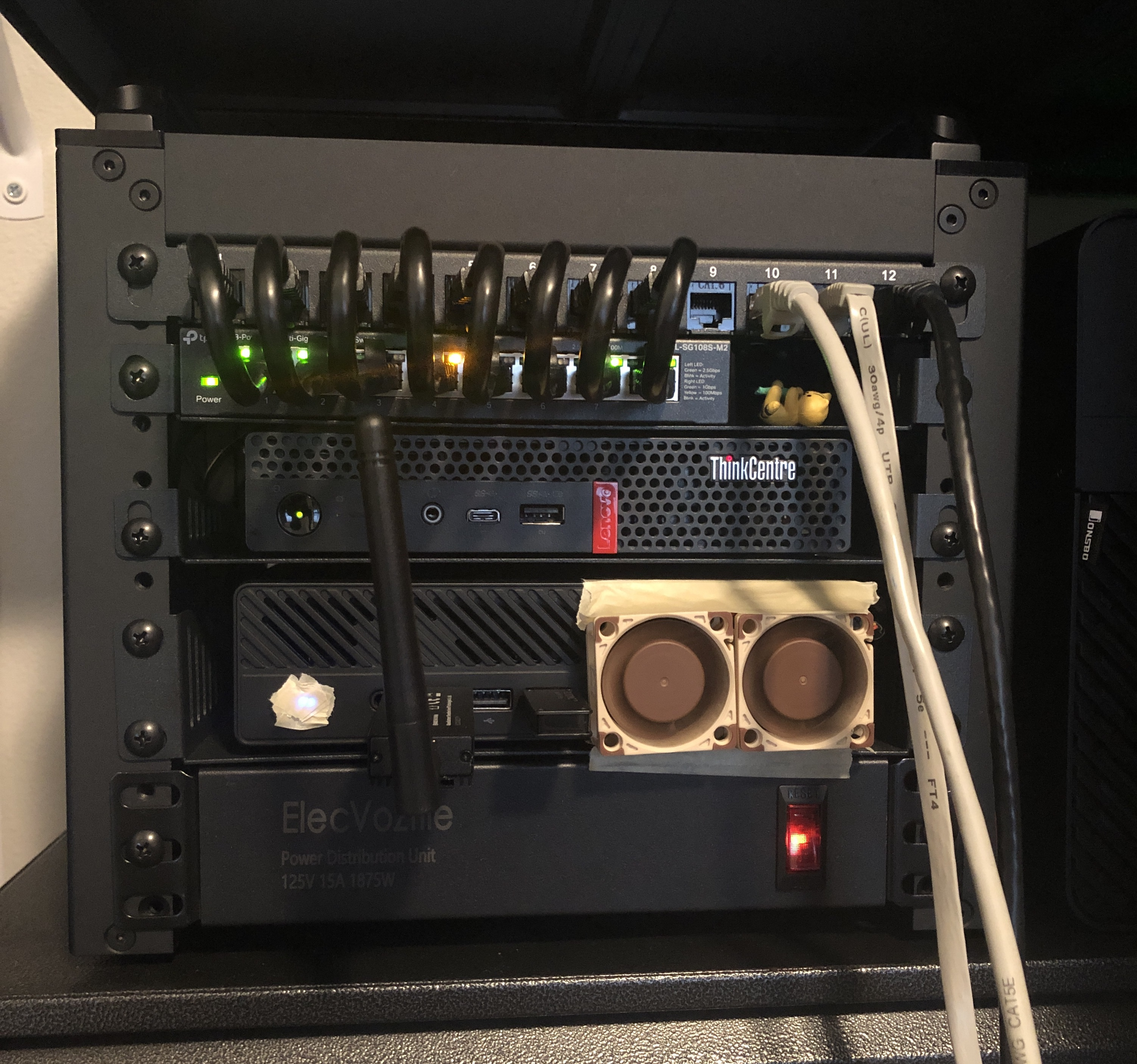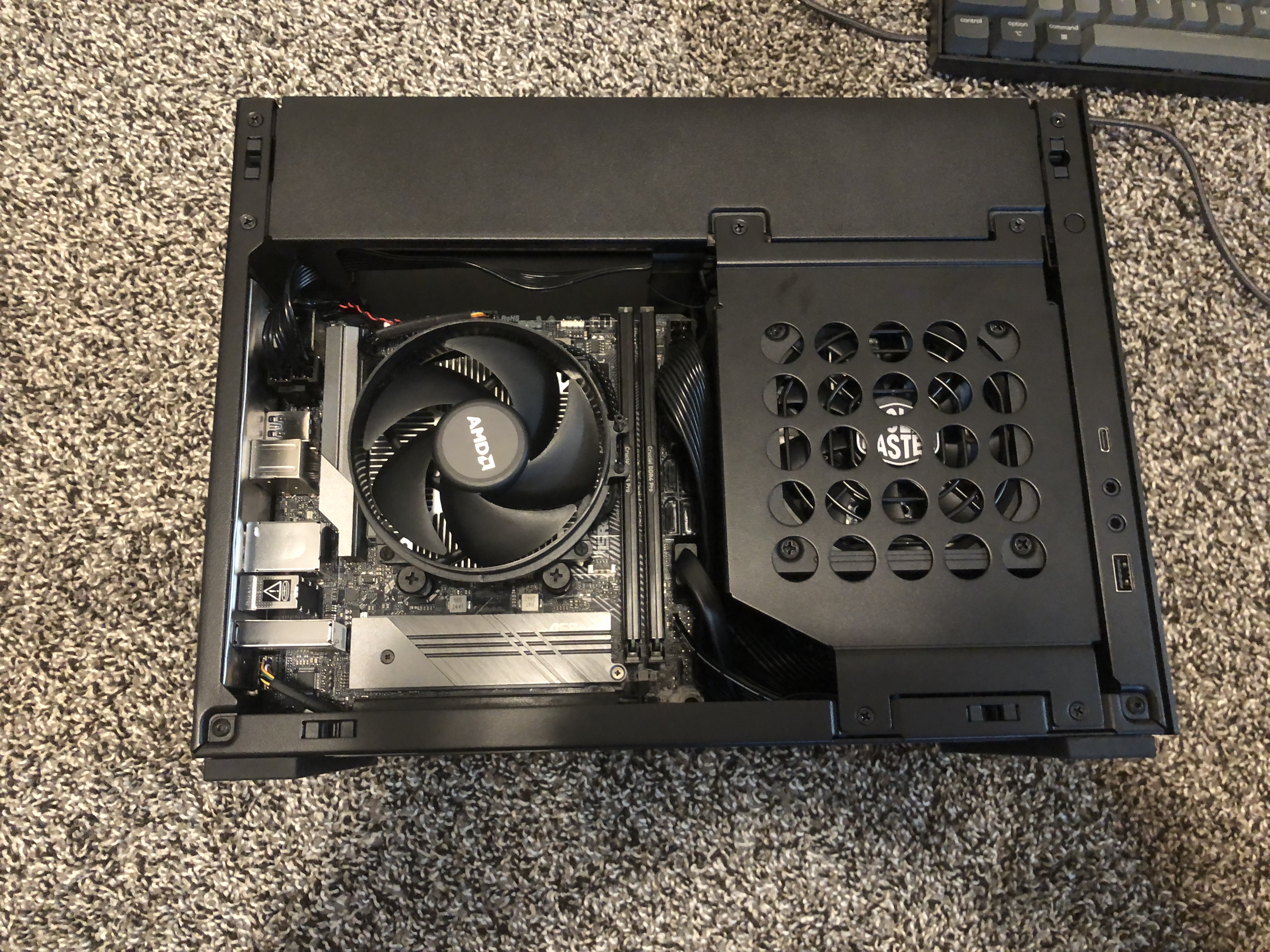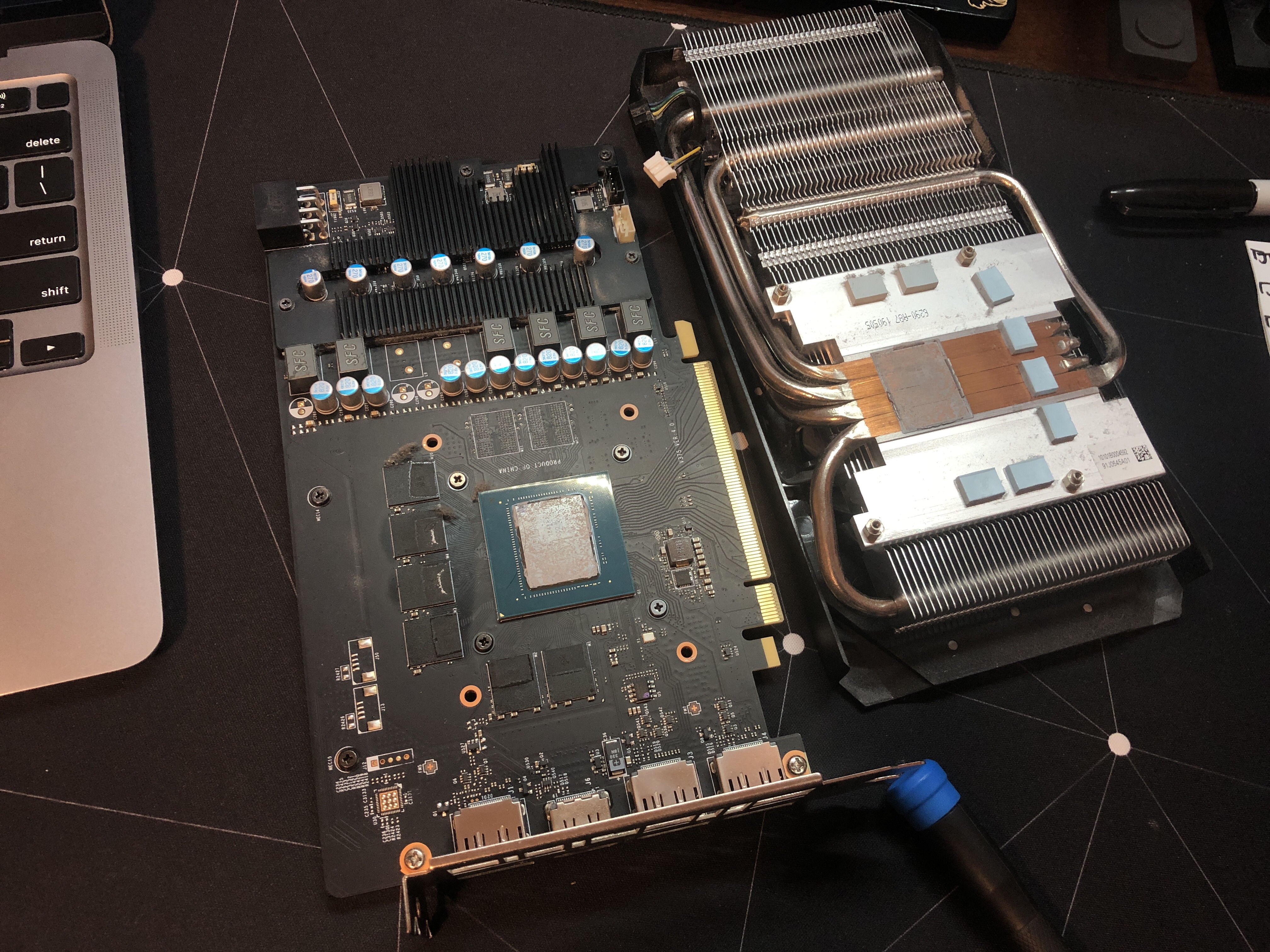My new gaming PC
Table of Contents
My current gaming setup - A2
After recently downsizing my homelab, my original intention was to keep using my Windows 11 VM with my 2TB SSD and RTX A2000 passed into it, whom I’ve aptly named A2. :)
While this worked great using Apollo as the server - especially for its ability to dynamically change resolution based on a client using Moonlight - this approach did have its pros and cons.
What I loved
What I loved about this setup was its hyper-compactness in the MS-01, its decent performance at 1080p ultrawide, and the ability to play my games anywhere via streaming. Whether I’m at my desk, on my phone, or in bed, I can remote into the VM from any client. It was low-latency, seamless, and granted me a lot of flexibility.
However, this setup wasn’t perfect - far from it - despite my best efforts.
Thermal problems
After the downsize, I immediately realized my A2000 was experiencing thermal issues - frequently idling at around 70°C, hitting around 96°C under gaming loads, and taking forever to cool down.
I had remediated this issue by simply taping fans on the front of the MS-01, which actually worked great. But because of the thermal issues, I found myself more focused on temperatures instead of actually relaxing and playing games.

Performance and Apollo virtual displays
With titles like God of War, Sonic Racing: CrossWorlds, and more, I found myself tweaking settings constantly. And because Apollo uses virtual displays, VSync is sometimes a problem, resulting in a choppy experience despite the A2000 being powerful enough.
Kernel-level checks
Because this is a virtualized host, I can’t run kernel-level anticheat games. I originally didn’t care - since I was fine avoiding titles like Wuthering Waves, Genshin Impact, Zenless Zone Zero, VALORANT, and League of Legends - but some elevated checks from non-games actually prevented me from working on certain projects.
Upgradability
If I wanted to upgrade from my A2000 for gaming, I’d easily be overspending on cards like the RTX 2000e Ada, RTX 4000 Ada, or other single-slot half-height cards that outperform the A2000.
And even then, cards like the RTX 4000 run hotter. CraftComputing has some great videos attempting to cool one in the Minisforum, but the conclusion is that the heat isn’t manageable at this form factor.
Microphones
Lastly, if I wanted to play games like R.E.P.O., Phasmophobia, or anything with proximity chat, I’d need to pass a headset into the VM instead of using my existing speaker/mic setup. It’s a minor limitation, but I don’t want redundant hardware - and fixing this doesn’t address the mountain of other problems.
So, despite my best efforts, I think it’s time to move to a more traditional solution!
My dedicated gaming PC - A4
For my new gaming PC, I had a few requirements:
- Must be small form factor
- Must be able to reuse hardware
- Must be relatively affordable
- Must be upgradable
- Must be equally/more performant than my VM
- Must be quiet (or at least not annoyingly loud)
A4 components
To hit the small form factor goal, I went with the Lian Li A4-H2O in black. I’ve always wanted to build in this case, so this felt like the perfect choice!
The vertical space for an AIO and two 120mm fans is great for ample airflow inside the case, even if my hardware isn’t crazy. To help with cooling, I bought two Noctua NF-P12 120mm fans as top exhausts.
I also picked up the Cooler Master 850W SFX power supply, the same one in my N2 NAS. It’s been rock-solid, has 80+ Gold efficiency, and is relatively affordable.
The CPU, RAM, SSD, and GPU are all reused:
- The Ryzen 5 5600G and 64GB of Crucial DDR4 Pro from my 2U server
- The WD BLACK 2TB SN7100 NVMe SSD from my MS-01
- And an MSI Ventus RTX 2060 6GB I had lying around
I didn’t have a spare AM4 ITX motherboard, so I picked up an ASRock B550M-ITX/AC motherboard on eBay for a great price!
Build experience
The build experience was awesome, quick and really easy to work in. The only problem was with installing the GPU. Aligning it with the PCIe bracket was finicky, but barely threading a screw first and then pressing it into the riser helped keep it aligned.


GPU problems!
When trying to align the GPU, I was using a fair amount of force and must have partially dislodged the cooler. When I started playing games, the GPU would spike to 85°C, the fans would scream at 100%, and temperatures wouldn’t drop.
I’ve tried removing the side panel, increasing airflow from the GPU chamber to the top of the case, but to no avail, the temperatures still spiked, which was weird.
This then suggested the cooler was the problem, which I additionally used as an opportunity to repaste the card using my trusty Arctic MX-6 thermal paste.

This also gave me a great opportunity to look at the 2060’s TU106 die as well as some memory pads that appear ready to receive some new RAM chips!

Once reassembled, temperatures instantly dropped. Previously, the GPU hit over 80°C with a roughly 25°C hotspot delta. Now, it sits around 50°C with a roughly 15°C hotspot delta!
Even better, the before image was taken when playing at 1080p, while the after image was taken playing the same game at 4K!


Performance

With the GPU issues fixed, this thing performs amazingly!
It runs every game I play at 1440P/4K at very reasonable settings, and the experience has been awesome. It’s been forever since I’ve felt like I’ve truly been immersed in something that wasn’t work or project related, and that has been great for my mental health. :)
Lastly, I had completed this build just in time for a LAN party I will be hosting with my friends! :D
Lessons learned
My A2000 VM setup is something I’m genuinely proud of. It’s efficient, relatively performant, and squeezes an impressive amount of capability out of the MS-01. But, like my old 2U server, I learned that complex, density-focused, niche setups can cause more problems than they solve.
That’s when I realized this:
Just because you can doesn’t mean you should.
I can build intricate, multi-purpose systems that maximize my hardware, but these sometimes come with tradeoffs, like increased complexity, higher maintenance, and reduced stability.
Choosing the flashy, overly complicated solution out of pride and a focus on density is pointless when what I actually need an appliance.
Just because I can do things the “hard way” doesn’t mean it’s the best way. It’s not about showing I’m capable of building something convoluted, it’s about building something that actually aligns with my goals.
My gaming PC is no different. I need effortless immersion, strong performance, and a clear upgrade path. Letting go of the pride tied to my niche VM configuration allowed me to build something that actually aligns with what I need, which helps both A2 and A4 thrive at what they were originally built for. :)
Full hardware list
- CPU: Ryzen 5 5600G
- RAM: 64GB Crucial Pro DDR4
- SSD: WD BLACK 2TB SN7100 NVMe SSD
- GPU: MSI Ventus RTX 2060 6GB
- Motherboard: ASRock B550 ITX/AC
- PSU: Cooler Master V850SFX Gold
- Case: Lian Li A4 H2O
- Fans: Noctua NF-P12 120mm
References
- https://hunio.org/posts/homelab/my-new-downsized-homelab/
- https://github.com/ClassicOldSong/Apollo
- https://moonlight-stream.org/
- https://hunio.org/posts/homelab/cooling-the-a2000-in-my-ms-01/
- https://www.youtube.com/watch?v=SiGHQJ_zdR0
- https://www.youtube.com/watch?v=aijXWtBBlzU
- https://www.amazon.com/A4-H2O-Aluminum-Mini-ITX-Computer-Included/dp/B09T73JG49
- https://www.amazon.com/dp/B07CG2PGY6
- https://www.amazon.com/dp/B08LP6WS35
- https://www.amazon.com/AMD-Ryzen-5600G-12-Thread-Processor/dp/B092L9GF5N
- https://www.amazon.com/Crucial-3200MT-3000MT-Desktop-CP2K32G4DFRA32A/dp/B0C29W4G29?th=1
- https://www.amazon.com/WD_BLACK-SN7100-Internal-Gaming-Solid/dp/B0DN6ZQ3PD
- https://www.amazon.com/MSI-GeForce-RTX-2060-VENTUS/dp/B07MC23VS4
- https://www.ebay.com/itm/295203380464
- https://www.amazon.com/dp/B09VDL3CW6
- https://www.techpowerup.com/gpu-specs/nvidia-tu106.g875